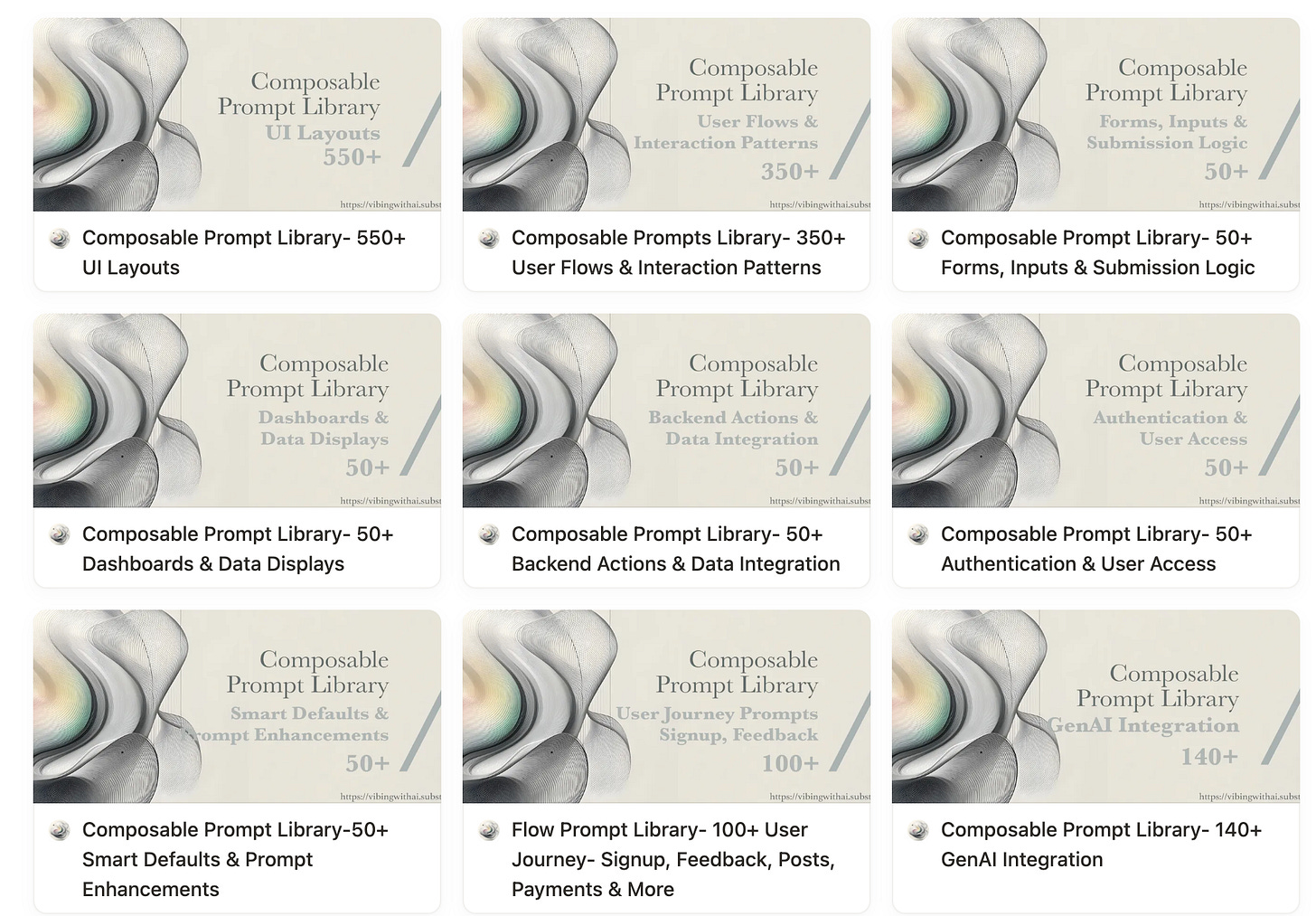The Phrasebook for Building with AI for Non-Techie Vibe Coders
1,500+ Composable Prompts to Remix, Scaffold, and Ship
Vibe Coding is transitioning from a niche experiment to a mainstream movement day by day since its inception.
Despite the skeptics (mostly from traditionally trained programmers and software engineers), the consensus is emerging: this is how most software will be developed.
Garry Tan, CEO of Y Combinator, the world's leading startup accelerator, says that startups using Vibe Coding are going from idea to launch in weeks, not quarters.
Sam Altman calls this the era of the idea person.
Jensen Huang, CEO of Nvidia, calls AI “the greatest equalizer of all time” — because for the first time, anyone can program a computer.
For decades, software was locked behind skill walls and expensive teams. Now, AI has broken down those walls.
But for non-technical builders, the biggest challenge is just getting started.
It’s true that there are endless tutorials on YouTube and Twitter promising to “teach Vibe Coding in minutes.” But for a complete beginner stepping into AI-powered product building, most of these are just noise without a clear direction.
At the same time, the conversation in the space has shifted toward revenue screenshots — six-figure MRR claims, overnight success stories, and apps built at lightning speed.
But none of this helps a beginner. Without the foundations, they’re left to hand over their agency to the tools, copying what the AI spits out without understanding what’s happening behind the scenes.
The Beginner’s Block
When new builders try Vibe Coding, they get stuck at the first step.
They don’t speak the language of dev, so their prompts come out vague.
That’s why the Vibe Coding Starter Kit begins with vocabulary – after all, when Vibe Coding, you can’t prompt what you can’t name.
The guide "When Vibe Coding, You Can’t Prompt What You Can’t Name" gives you 1,450+ modern web terms, so your prompts stop being fuzzy and start scaffolding real systems.
But once you have the words, the next hurdle is phrasing.
What comes after vocabulary is structure.
The Problem: Fuzzy Prompts, Half-Built Apps
Vague prompts create vague software.
You ask for a dashboard, and the AI gives you something that looks like one. But the buttons don’t connect, the data doesn’t update, and nothing feels usable.
Without structure, the AI can only guess. And the result is half-finished.
The Solution: Composable Prompts
Instead of treating prompts as one-off guesses, treat them as building blocks.
Modern apps are made of layouts, flows, forms, dashboards, and logic. When you describe those same pieces in your prompts, you stop guessing and start assembling.
This is composability: taking modular prompts and combining them into full features that work.
You don’t need to invent the perfect prompt. You only need the right pieces.
That is where the Composable Prompts Library comes into play.
What’s Inside the Composable Prompt Library
The Composable Prompt Library is the second half of the Starter Kit.
If the Vocabulary guide gives you the words, the Composable Library gives you the phrases.
It contains 1,500+ prompts organized into 11 categories — the reusable building blocks of modern apps. Each category addresses a specific aspect of the puzzle involved in building digital products.
Here’s what they are, and one example prompt from each:
Keep reading with a 7-day free trial
Subscribe to Vibe Coding to keep reading this post and get 7 days of free access to the full post archives.



